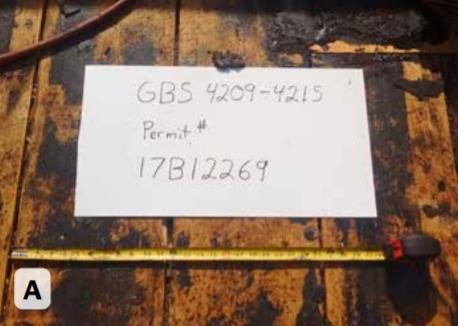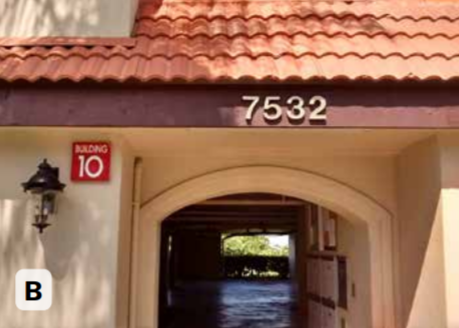“I Need Better Pictures”

By Mike Silvers, CPRC, Owner Silvers Systems Inc. and FRSA Technical Director.
Consider the process used for taking and maintaining job pictures that will prove valuable throughout the bidding, planning and performance of your jobs.
We were working on a condominium reroof in a municipality that will remain nameless, as will the building inspector who didn’t have time to inspect the renailing of the sheathing. Instead, he wanted us to document our compliance by taking pictures of the nailing with the permit number displayed for his convenience (see picture A). His approach did demonstrate a willingness to accommodate our work schedule and document our compliance but, when the initial pictures I provided were unsatisfactory to him, I wanted to explain that his need for better pictures had to be weighed against some of the other skills needed by our employees.

I needed someone willing to work in Florida’s heat and do physically demanding work. It was also important that they had some idea of how to install and repair many different roof systems. We needed to get our truck to the job, requiring a commercial driver’s license (CDL). We also needed to work safely, requiring Occupational Safety and Health Administration (OSHA) training. Our crew leaders needed organizational skills to manage the necessary paperwork. And don’t forget training on communication and people skills. So, on top of all that, I need to add amateur photographer to the job requirements? With that being said, his response was, “That sounds tough to do, but I still need better pictures.”
Visual documentation has become common practice for most roofing contractors. We will usually take in-progress job pictures. We also document roof repairs showing what we found and how the problem was addressed. For many contractors, the most important pictures are taken before the job is even bid. The accuracy of the information gathered in the field, which is needed to produce an estimate, is critical. It affects whether the job will be profitable. It will also impact how prepared you will be to perform the work. A missed detail or condition and, therefore, the lack of needed materials can cause delays, if not stop progress completely. If your company’s estimators depend on pictures when producing a bid, they may also need better pictures. I hope that this article will help you consider the process you use for taking and maintaining job pictures that will prove valuable throughout the bidding, planning and performance of your jobs. They also provide good before and after pictures for comparison during sales demonstrations.
In order to properly measure a roof, you need to establish the roof shape and dimensions. Many contractors are using subscription services with companies that produce reports (roof plans) derived from satellite pictures. These are certainly handy, as they also show the dimensions on the plans. If you use this information alone to produce your estimates without an onsite roof inspection, you should have a very well-worded contract to cover all the contingencies that may arise from the lack of information gathered by an experienced contractor or a well-trained employee.
Years ago, we found a great free tool to use when planning a roof estimate, repair or inspection. We’ve used Google Earth to review and print a picture of any roof we have not previously measured. If the roof is not obscured by trees, the picture can be used as a roof plan with dimensions and notes added. The street view feature is also useful to establish the approximate building height for access (ladder height, roof hatch, etc.). You can also produce a roof plan onsite by drawing the roof by hand. This is an acquired skill for most people; there is usually not time to do a scaled drawing, so the ability to produce a reasonable facsimile by hand is very valuable.
I am using a low-slope roof as an example here, but much of the overall approach also applies to steep-slope roofs as well.
Learn more about FRSA in their RoofersCoffeeShop Directory or visit http://floridaroof.com.
About FRSA
The Florida Roofing and Sheet Metal Contractors Association was founded in 1922 to bring together contractors as well as businesses with related interests. FRSA's purpose is to foster and encourage a high standard of business ethics among its members and to inform the general public of the importance of doing business with competent and ethical firms. FRSA encourages quality through research, education, and recognition of competence. The Association provides potential economies through the cooperative purchasing of insurance, financial services and other products and services designated by the Board of Directors. FRSA represents the interests and acts as the voice of its membership before government and regulatory bodies of all kinds and works to improve the overall industry in keeping with the general purposes of the Association.
























Comments
Leave a Reply
Have an account? Login to leave a comment!
Sign In